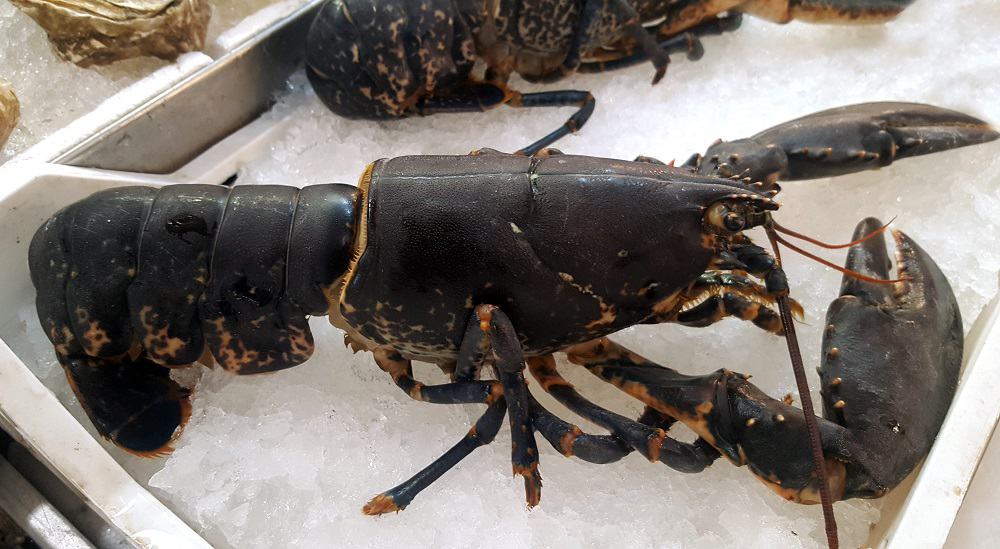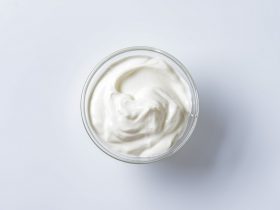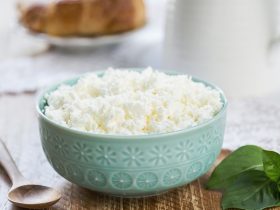Seafood is an incredible source of protein and omega-3 polyunsaturated fatty acids. During pregnancy, it has been advised to keep away from certain kinds of sushi and fish. But eating seafood also offers a lot of benefits for pregnant women and their infants.
Fortunately, most types of seafood, including lobsters, are safe to eat. They have low mercury content and are included in the “Best Choices” for seafood consumption in pregnancy. Lobsters are high in protein, but low in fat. However, they also contain high levels of cholesterol.
Benefits of Seafood Consumption
Prevention of Cardiovascular Disease
The vast conclusion among published CVD outcomes related to seafood consumption in both observational and clinical intervention trials is that of a reduction in the risk of cardiovascular disease (CVD), in particular death from cardiac events (Raatz et al., 2013).
Yamagishi et al. (2008) observed that seafood consumption was inversely associated with cardiovascular mortality, particularly for heart failure, with 18 to 19 percent lower risk. Similarly, Streppel et al. (2008) found that consumption of fatty fish was linked to decreased risk of sudden coronary death. Further, Amigo et al. (2020) reported that an increased intake of seafood and omega-3 fatty acids were associated with cardiovascular protection, including prevention of atherosclersosis.
De Goede et al. (2010) showed an inverse dose-response relationship between seafood consumption and fatal coronary heart disease (CHD) and myocardial infarction (MI). Among their participants with the highest quartile of seafood consumption, a 49% reduction in risk of fatal CHD and a 62% reduction in risk of fatal MI were found.
Seafood is a major source of omega-3 fatty acids in the human diet. In general, omega-3 fatty acids decrease the risk for CVD through anti-lipidemic, anti-inflammatory, anti-platelet, and anti-arrhythmic mechanisms. But their amount in seafood is dependent on the species, habitat, fat content, and source of aquafeed for farmed seafood varieties (Raatz et al., 2013).
No current Dietary Reference Intake (DRI) for the fatty acids eicosapentaenoic acid (EPA) and docosahexaenoic acid (DHA) exist in the United States (Trumbo et al., 2002). However, based upon recent data, there is strong support for the establishment of a DRI of 250 to 500 mg per day of EPA and DHA for reduction of CVD risk (Raatz et al., 2013).
Recent findings suggest that docosapentaenoic acid (DPA), an intermediate product in the conversion of EPA to DHA also found in seafood sources, may have its own effects on CVD-related outcomes (Raatz et al., 2013). According to the USDA (2020), 1 cup of cooked lobster can contain 168 milligrams of EPA, 9 milligrams of DPA, and 112 milligrams of DHA.
Promotion of Maternal and Fetal Health
Seafood is a rich source of key nutrients including iodine, vitamin B12, iron, vitamin D, zinc, manganese and polyunsaturated omega-3 and omega-6 fatty acids, which are biologically essential for optimal fetal and child neurodevelopment. Hence, maternal prenatal nutrition is very important, and failure to acquire these nutrients during the critical period of brain development may result in lifelong deficits in brain function (Schwarzenberg et al., 2018).
Pregnant women who consume seafood are more likely to receive optimal intake of these nutrients. As observed by Bonham et al. in 2009, pregnant women who met the recommendations for intake of nutrients needed for fetal development were those who consumed significantly more seafoods.
There is consistent evidence that points to improved fetal neurocognitive development with consumption of a wide range of seafood amounts and types during pregnancy, compared to eating no seafood. This benefit was seen with the lowest amounts of seafood intake at about 4 ounces per week, and continued through the highest amounts, above 12 ounces to more than 100 ounces per week (Hibbeln et al., 2019).
Maternal intake of omega-3 fatty acids, especially EPA and DHA, are likewise linked to improved neonatal outcomes. Brantsӕter et al. in 2017 demonstrated that maternal intake of seafood, but not intake of DHA-containing prenatal vitamins, decreases the prevalence of preterm birth.
Eating Lobster During Pregnancy

Lobster is used as a general term for different species, including true lobsters, spiny lobsters, shovel lobsters, and deep-sea lobsters. They are considered marine crustaceans, along with shrimp, krill and barnacles.
According to the U.S. Department of Agriculture (USDA) in 2020, 1 cup or 145 grams of cooked or diced lobster can contain the following micro- and macronutrients:
- Protein – 27.4 grams
- Fat – 1.23 grams
- Calcium – 132 mg
- Iron – 0.377 mg
- Magnesium – 52.2 mg
- Phosphorus – 187 mg
- Potassium – 232 mg
- Sodium – 964 mg
- Zinc – 5.83 mg
- Copper – 1.79 mg
- Selenium – 105 micrograms
- Vitamin B1 (Thiamin) – 0.03 mg
- Vitamin B2 (Riboflavin) – 0.019 mg
- Vitamin B3 (Niacin) – 1.98 mg
- Vitamin B6 (Pyridoxine) – 0.145 mg
- Folate – 11.6 micrograms
- Choline – 117 mg
- Vitamin A – 1.45 microgram
- Vitamin E – 1.44 mg
- Total PUFA – 0.49 grams
- EPA – 0.168 grams
- DPA – 0.009 grams
- DHA – 0.112 grams
- Cholesterol 210 mg
Lobster meat is a good source of protein (27.4 grams per cup) and omega-3 polyunsaturated fatty acids (PUFA) (490 milligrams per cup). It is also low in fat, with only 1.23 grams per cup. Lobster has lower fat content compared to other crustaceans like shrimp (16.8 grams) and crawfish (1.7 grams). But its protein content is slightly higher compared to other crustaceans, including shrimp (22 grams), crawfish (23.3 grams), and crab (21 grams).
However, most seafoods are low in cholesterol with the exception of crab, lobster, shrimp and oysters (Raatz et al., 2013). Lobsters were found to contain significant amounts of cholesterol when compared to muscle meats. Lobster can contain up to 146 mg of cholesterol per 100 grams of lobster, compared to 82 mg of cholesterol per 100 grams of 90% cooked lean ground beef. Conversely, mollusks had lower cholesterol content, with only 23.4 mg per 100 grams of scallops and 82.2 mg per 100 grams of oysters (Phillips et al., 2012).
The American Heart Association recommends consumption of less than 300 mg of cholesterol per day. A serving size of 85 grams (or 3 ounces) of lobster would, therefore, already contribute as much as 41% of this recommended daily value (Phillips et al., 2012).
According to the 2015-2020 Dietary Guidelines for Americans (DGA), one serving of seafood is equivalent to 4 ounces in adults. During pregnancy, they recommend consumption of one to two servings per week of various seafood from their “Best Choices” list, or one serving from their “Good Choices” list. American and spiny lobsters are classified under the best choices for seafood consumption according to the U.S. Food & Drug Administration (FDA) and Environmental Protection Agency.
Types of Seafood to Avoid During Pregnancy
Avoid Raw or Undercooked Seafood

Pregnant women are more prone to food borne diseases, including Listeriosis and Toxoplasmosis. To avoid harmful pathogens that may be present in seafood, pregnant women should not eat raw fish and shellfish, including sushi, sashimi, raw oysters, scallops or clams, and ceviche. Refrigerated and uncooked seafood should also be avoided, such as seafood labeled as jerky, smoked, lox, kippered, or nova style.
Listeriosis during pregnancy can lead to infection of the mother, fetus and newborn. Maternal infection generally presents as a mild febrile illness. However, fetal infection can lead to spontaneous abortions, with mortality rates as high as 25 to 35 percent. Neonatal Listeriosis, on the other hand, can present as sepsis or meningitis, with severe sequelae, and can also lead to death, with a high case fatality rate of 20 percent (Madjunkov et al., 2017).
Infection with Toxoplasma gondii in pregnant women can cause significant infection in the unborn fetus. Fetal infection can cause serious health problems in the child, such as mental retardation, neurological disorders and blindness. Eating raw seafood is one way Toxoplasmosis is transmitted to humans (Hussain et al., 2017).
Cook Seafood Thoroughly
All kinds of seafood should be cooked properly. Fish should be cooked until an internal temperature of 145oF (or 63oC) has been achieved. Shrimp, lobster and scallops should be cooked until they become milky white. Cook clams, mussels and oysters until their shells open.
Be Mindful of Water Contamination and Potential Exposure to Toxins
Understand local fish advisories and especially watch out for concerns regarding water pollution. The following are toxins that may be present in lakes, rivers and coastal waters: polychlorinated biphenyls (PCBs), mercury, dichloro-diphenyl-trichloroethane (DDT), chlordane, and dioxins.
Mercury is a neurotoxin that affects the fetus. It is present in essentially all seafood at different levels of exposure (Hibbeln et al., 2019). Studies have linked mercury to adverse birth outcomes, including preterm delivery, smaller fetal growth and development of birth defects (Zilversmit et al., 2017).
According to the U.S. FDA, the following seafood are recommended to be avoided during pregnancy because they have the highest mercury levels:
- Shark
- Marlin
- Orange roughy
- King mackerel
- Bigeye tuna
- Swordfish
- Tilefish
Final Thoughts
Eating a variety of seafoods is recommended for all pregnant women to achieve sufficient levels of key nutrients that are essential for fetal health and development. Knowing which types of seafood are safe to eat is important to prevent food borne infections and toxin exposures that could affect the developing fetus and lead to serious consequences.
Lobsters are a good choice for pregnant women. It is high in protein but low in fat, and an excellent source of omega-3 PUFA, EPA and DHA. Unfortunately, it could also be high in cholesterol, so be careful with indulging yourself too much with this delicacy. Always contact your health care provider for complete and unbiased answers to your questions regarding dietary intake during pregnancy.
References
- https://www.webmd.com/
- https://www.mayoclinic.org/
- https://www.britannica.com/
- https://www.woodmans.com/
- https://www.fda.gov/
- https://www.healthline.com/
- Amigo, N., Akinkuolie, A., Chiuve, S., Correig, X., Cook, N., & Mora, S. (2020). Habitual fish consumption, n-3 fatty acids, and nuclear magnetic resonance lipoprotein subfractions in women. Journal of the American Heart Association 9(5), e014963. doi: 10.1161/JAHA.119.014963
- Bonham, M., Duffy, E., Robson, P., Wallace, J., Myers, G., Davidson, P., …, & Livingstone, M. B. (2009). Contribution of fish to intakes of micronutrients important for fetal development: A dietary survey of pregnant women in the Republic of Seychelles. Public Health Nutrition 12(9), 1312-1320. doi: 10.1017/S136898000800387X
- Brantsӕter, A. L., Englund-Ogge, L., Haugen, M., Birgisdottir, B. E., Knutsen, H. K., Sengpiel, V., …, & Meltzer, H. M. (2017). Maternal intake of seafood and supplementary long chain n-3 poly-unsaturated fatty acids and preterm delivery. BMC Pregnancy and Childbirth 17(1), 41. doi: 10.1186/s12884-017-1225-8
- De Goede, J., Geleijnse, J., Boer, J., Kromhout, D., & Verschuren, W. M. (2010). Marine (n-3) fatty acids, fish consumption, and the 10-year risk of fatal and nonfatal coronary heart disease in a large population of Dutch adults with low fish intake. The Journal of Nutrition 140(5), 1023-1028. doi: 10.3945/jn.109.119271
- Hibbeln, J., Spiller, P., Brenna, J. T., Golding, J., Holub, B., Harris, W., …, & Carlson, S. (2019). Relationships between seafood consumption during pregnancy and childhood and neurocognitive development: Two systematic reviews, Prostaglandins, Leukotrienes & Essential Fatty Acids 151, 14-36. doi: 10.1016/j.plefa.2019.10.002
- Hussain, M., Stitt, V., Szabo, E., & Nelan, B. (2017). Toxoplasma gondii in the food supply. Pathogens 6(2), 21. doi: 10.3390/pathogens6020021
- Madjunkov, M., Chaudhry, S., & Ito, S. (2017). Listeriosis during pregnancy. Archives of Gynecology and Obstetrics 296(2), 143-152. doi: 10.1007/s00404-017-4401-1
- Phillips, K., Ruggio, D., Exler, J., & Patterson, K. (2012). Sterol composition of shellfish species commonly consumed in the United States. Food & Nutrition Research 56. doi: 10.3402/fnr.v56i0.18931
- Raatz, S., Silverstein, J., Jahns, L., & Picklo, M., Sr. (2013). Issues of fish consumption for cardiovascular disease risk reduction. Nutrients 5(4), 1081-1097. doi: 10.3390/nu5041081
- Schwarzenberg, S. J., & Georgieff, M. (2018). Advocacy for improving nutrition in the first 1000 days to support childhood development and adult health. Pediatrics 141(2), e20173716. doi: 10.1542/peds.2017-3716
- Streppel, M., Ocke, M., Boshuizen, H., Kok, F., & Kromhout, D. (2008). Long-term fish consumption and n-3 fatty acid intake in relation to (sudden) coronary heart disease death: The Zutphen study. European Heart Journal 29(16), 2024-2030. doi: 10.1093/eurheartj/ehn294
- Trumbo, P., Schlicker, S., Yates, A., & Poos, M. (2002). Dietary reference intakes for energy, carbohydrate, fiber, fat, fatty acids, cholesterol, protein and amino acids. Journal of the American Dietetic Association 102(11), 1621-1630. doi: 10.1016/s0002-8223(02)90346-9
- U.S. Department of Agriculture. (2020). FoodData central search results. https://fdc.nal.usda.gov/fdc-app.html#/food-details/1099125/nutrients
- Yamagishi, K., Iso, H., Date, C., Fukui, M., Wakai, K., Kikuchi, S., …, & Tamakoshi, A. (2008). Fish, omega-3 polyunsaturated fatty acids, and mortality from cardiovascular diseases in a nationwide community-based cohort of Japanese men and women: The JACC (Japan Collaborative Cohort Study for Evaluation of Cancer Risk) study. Journal of the American College of Cardiology 52(12), 988-996. doi: 10.1016/j.jacc.2008.06.018
- Zilversmit, L., Wickliffe, J., Shankar, A., Taylor, R., & Harville, E. (2017). Correlations of biomarkers and self-reported seafood consumption among pregnant and non-pregnant women in Southeastern Louisiana after the Gulf Oil Spill: The GROWH study. International Journal of Environmental Research and Public Health 14(7), 784. doi: 10.3390/ijerph14070784




